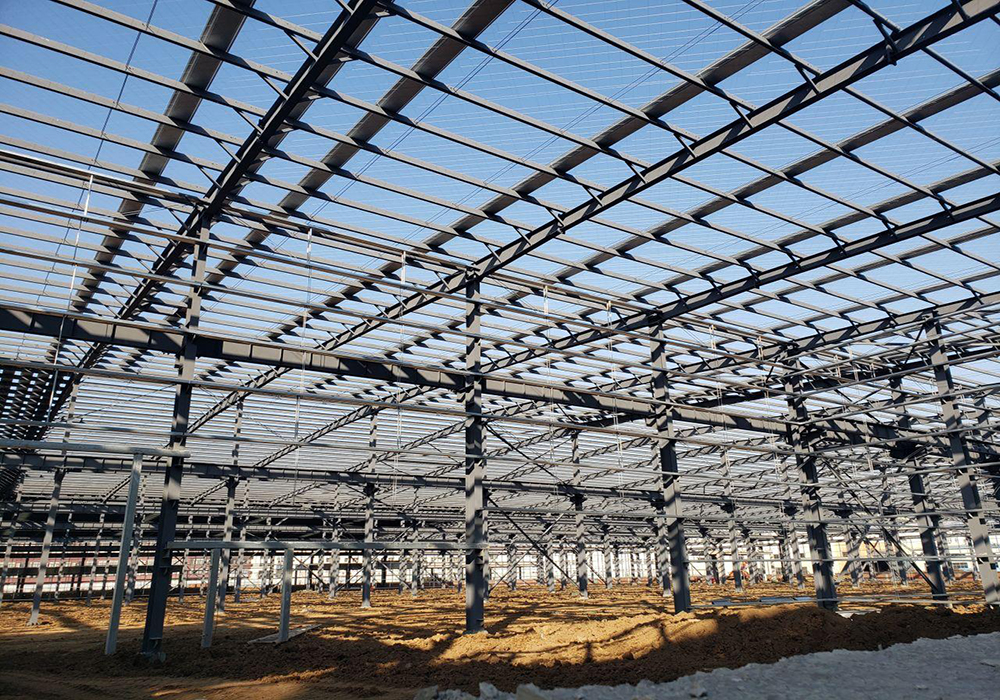Installation Process of Steel Structure Engineering

The installation process of steel structure engineering is a complex endeavor that requires a high degree of attention to safety and quality. Here are the key considerations for Americans to be aware of:
I. Preliminary Planning and Preparation
Risk Assessment: Before installation, conduct a comprehensive risk assessment of the project to identify potential safety hazards and formulate corresponding preventive measures.
Familiarity with Drawings: Before construction, it is essential to thoroughly read and understand the construction drawings, clarifying the design intent and structural requirements.
Construction Plan: Develop a detailed construction plan outlining the installation steps, required materials, equipment, and personnel allocation to ensure orderly progress during the construction process.
Personnel Training: Provide safety education and skills training to construction personnel to ensure they possess the necessary operational skills and safety awareness.
II. Construction Site Safety
Establishment of Safe Zones: Set up clearly defined safe zones on the construction site with warning signs to prevent non-construction personnel from entering hazardous areas.
Protective Facilities: Install necessary protective facilities, such as safety nets and guardrails, to prevent accidents such as falls from heights and object impacts.
Equipment Inspection: Regularly inspect and maintain lifting equipment, welding equipment, and other tools used to ensure their safety and reliability.

III. Installation Process Control
Reasonable Arrangement of Construction Sequence: Based on the actual situation of the project, reasonably arrange the construction sequence to avoid cross-operations or repeated work. During installation, precise measurements and positioning should be conducted according to design requirements and standard specifications to ensure the accuracy and stability of the installation location.
Lifting Safety:
Before lifting, inspect and test the lifting equipment to ensure it operates normally.
During lifting, strictly adhere to design requirements and standard specifications to ensure the accuracy and stability of the lifting position.
Set up safety warning lines during lifting to prevent non-construction personnel from entering the construction site.
Assign a dedicated person to supervise the site during lifting to ensure construction safety.
High-Altitude Operation Safety:
Before high-altitude operations, inspect and test safety facilities to ensure their effectiveness and reliability.
During high-altitude operations, wear appropriate safety harnesses, helmets, and other protective equipment.
Avoid cross-operations and repeated work during high-altitude operations.
Assign a dedicated person to supervise the site during high-altitude operations to ensure construction safety.
Welding and Cutting Operation Safety:
Welding and cutting operations can easily produce sparks and high temperatures, so strict fire prevention measures must be taken, such as setting up fire extinguishers and fire blankets.
Maintain good ventilation during welding to prevent harmful gases from harming operators.
Welding operators should wear protective glasses, gloves, and other protective equipment to prevent (translated as "sparks and molten slag") from injuring their eyes and skin.

IV. Other Considerations
Fire Prevention Measures: Set up fire-fighting equipment and facilities on the construction site to ensure their completeness and effectiveness. During welding and other operations that can easily produce sparks, take corresponding protective measures to avoid fire accidents caused by spark splashes. Set up obvious fire prevention signs and warning signs on the construction site to raise the fire prevention awareness of construction personnel. Avoid open flame operations on the construction site as much as possible.
Electrical Safety:
Regularly inspect and maintain electrical equipment on the construction site to ensure its safety and reliability.
Temporary electricity use should comply with safety regulations, using qualified cables and sockets to prevent electric shock accidents.
When using electrical equipment in humid environments, take waterproof measures to prevent electrical equipment from being damaged by moisture or causing safety accidents.
Material Storage and Transportation Safety:
Heavy materials such as steel should be stacked on flat and solid ground with anti-slip measures to prevent collapse and rolling.
During transportation, ensure that the vehicle is stable and securely tied down to prevent steel and other heavy materials from falling off or rolling during transportation, which could cause accidents.
Emergency Plan and Drills: Develop a detailed emergency plan for possible safety accidents, clarifying emergency measures and rescue procedures, and conduct regular drills.
Quality Control: Conduct quality control over key processes, such as the processing of key parts and the craftsmanship of main components, to ensure that the construction quality meets design requirements.
In summary, the installation process of steel structure engineering involves various considerations, including preliminary planning and preparation, construction site safety, installation process control, and other aspects. Only by comprehensively considering and strictly implementing these considerations can the safety, quality, and progress of the steel structure engineering installation process be ensured.



